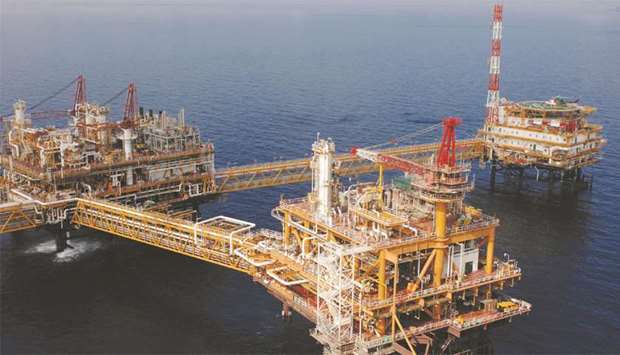The work on North Field Expansion project, which is “expected to begin in earnest” in 2020 will provide some boost for Qatar’s construction sector, researcher Dun & Bradstreet has said in a report.
The North Field Expansion project should boost Qatar’s liquefied natural gas (LNG) output by 43% by 2025, Dun & Bradstreet said.
Qatar's construction sector has seen a “steep growth” in recent years as the country has significantly invested in infrastructure megaprojects such as a new port and metro, it said.
In real terms, the construction sector is over 20 times its size at the start of the century, and has been the main driver of economic growth in recent years. At its peak in mid-2018, construction comprised 24% of non-oil GDP, double its level in 2013 (average of 12% in 2000-13).
This "outsized" construction sector was expected to slow down as the main construction phases of major projects were completed. Qatar is aiming to have the bulk of its core infrastructure ready well ahead of the 2022 FIFA World Cup, the report said.
Construction sector growth peaked at 34% y-o-y in 2017, slowing to 8% in 2018, before registering its first contraction in Q1, 2019 - shrinking by 1.2% y-o-y, Dun & Bradstreet said.
Qatar, the report noted, has largely overcome the economic impact of the blockade and adopted new trade routes and sources of financing, thus limiting the risks unless the differences intensify.
Energy-price volatility is a concern; however, Qatar has the resources, including through its sovereign wealth fund, to inject liquidity as required.
Last week, Dun & Bradstreet said, Qatar Stock Exchange index (QEI) outperformed other GCC indices and soared by more than 3% and settled above the 10,000 point mark on the back of strong buying support from domestic and foreign institutional investors. The index witnessed an increase of 35.53% in trading volume, led by bullish stance in banking and financial, real estate and industrial sectors.
In terms of oil prices, Dun & Bradstreet said these declined last week after China stated to impose new tariffs of around 5% to 10% on $75bn worth of US goods and resume duties on American autos. This was coupled with data from Baker Hughes which indicated that number of active rigs drilling in US declined by 19 to 916 last week.
Prices declined marginally last Monday on optimism surrounding resumption in US-China trade talks. On Tuesday, while crude futures price edged higher, the price of OPEC daily basket settled lower amid global demand concerns.
On Wednesday, prices increased following release of weekly data from the Energy Information Administration (EIA) which revealed a decline of 10mn barrels in US crude inventories. Oil prices continued their upward trend on Thursday amid optimism surrounding US-China trade talks, Dun & Bradstreet noted.


